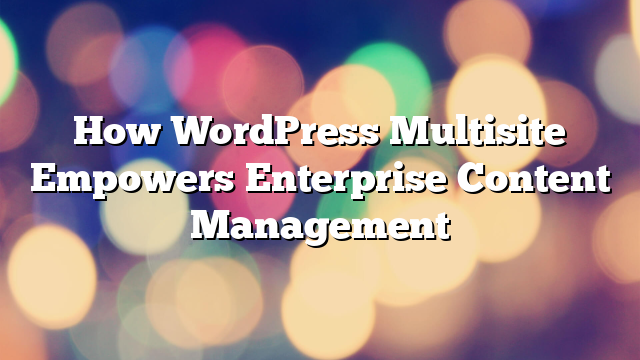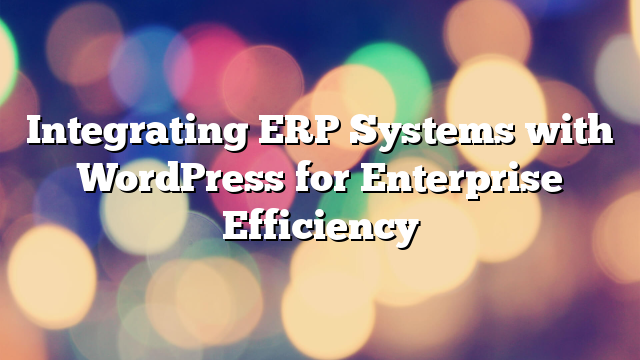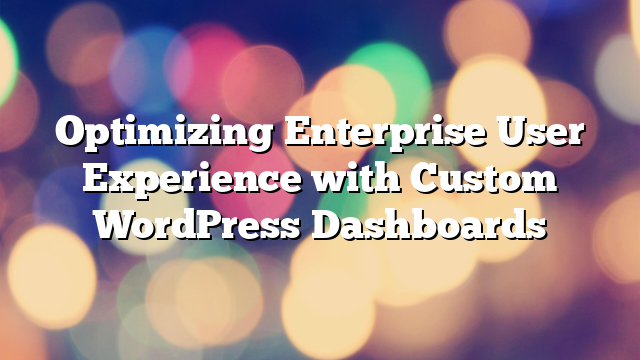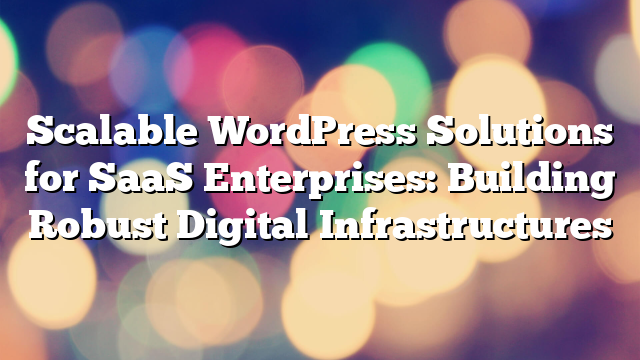How WordPress Multisite Empowers Enterprise Content Management
22.12.2024

Managing multiple websites across an enterprise can be challenging. From ensuring consistent branding to streamlining content updates, the complexity grows with scale. WordPress Multisite is a powerful feature that enables enterprises to manage multiple sites under a single installation. With its ability to centralize control while maintaining individual site autonomy, WordPress Multisite is an ideal solution for enterprise content management. This article explores its features, benefits, and implementation strategies.
What is WordPress Multisite?
WordPress Multisite is a built-in feature that allows you to create and manage multiple websites using a single WordPress installation. Each site within the network functions independently, with its own unique content, themes, and plugins. However, they share the same codebase, making updates and maintenance more streamlined.
Key Benefits of WordPress Multisite for Enterprises
1. Centralized Management
WordPress Multisite allows administrators to oversee multiple sites from a single dashboard. This simplifies tasks like plugin updates, theme management, and user access control, reducing administrative overhead.
2. Consistent Branding
For enterprises managing regional or departmental websites, Multisite ensures consistent branding. Themes and plugins can be standardized across the network, maintaining a unified look and feel.
3. Cost-Effective Scaling
By sharing resources like hosting, themes, and plugins, Multisite reduces costs associated with managing separate WordPress installations. This makes it a budget-friendly option for enterprises.
4. Enhanced User Management
Multisite offers granular user roles and permissions. Administrators can assign roles to users for individual sites or across the entire network, ensuring efficient collaboration and access control.
5. Tailored Customization for Each Site
While themes and plugins can be shared across the network, individual sites can still customize their content and settings. This balance between centralization and autonomy is invaluable for enterprises with diverse needs.
Use Cases for WordPress Multisite in Enterprises
1. Franchise or Regional Websites
Multisite is ideal for enterprises operating franchises or regional branches. Each site can showcase localized content while adhering to the brand’s overarching guidelines.
2. Multilingual Websites
For global enterprises, Multisite simplifies managing websites in multiple languages. Each language version can be a separate site within the network, ensuring accurate translations and localization.
3. Educational Institutions
Universities and schools can use Multisite to manage departmental websites, student blogs, and faculty pages under a unified system.
4. Content Networks
Enterprises with extensive content needs, such as news outlets or media companies, can use Multisite to manage various publications, topics, or categories under one umbrella.
Challenges of Using WordPress Multisite
1. Complex Setup and Maintenance
Multisite requires a thorough understanding of WordPress to configure and maintain effectively. Enterprises should rely on experienced developers to avoid potential issues.
2. Limited Plugin Compatibility
Not all WordPress plugins are compatible with Multisite. Enterprises need to evaluate plugin functionality to ensure they meet the network’s requirements.
3. Shared Resources
Since all sites share the same server resources, a high-traffic site within the network can affect the performance of others. Proper hosting and optimization strategies are essential.
4. Data Separation
While Multisite supports centralized management, individual site data is not entirely isolated. Enterprises handling sensitive information may need additional measures to ensure data segregation.
Best Practices for Implementing WordPress Multisite
1. Plan the Network Structure
Define the purpose and structure of your Multisite network before implementation. Consider factors like domain mapping, content requirements, and user roles to ensure a seamless setup.
2. Use Dedicated Hosting
Choose a hosting provider optimized for WordPress Multisite. Dedicated or managed hosting solutions ensure sufficient resources and performance for your network.
3. Optimize for Performance
Implement caching, a Content Delivery Network (CDN), and database optimization to maintain performance across the network. Regular monitoring is crucial to identify and address bottlenecks.
4. Enforce Security Measures
Secure your Multisite installation by using strong passwords, limiting access to administrators, and installing security plugins. Regular backups are essential to safeguard against data loss.
5. Train Your Team
Provide training for administrators and users to ensure they understand how to manage and operate within the Multisite network effectively. Clear documentation helps maintain consistency.
Conclusion
WordPress Multisite offers enterprises a scalable, centralized solution for managing multiple websites. From enhancing efficiency to ensuring consistent branding, its benefits make it a go-to choice for large organizations. However, successful implementation requires careful planning, proper resources, and adherence to best practices.
Ready to harness the power of WordPress Multisite for your enterprise? Contact AllWebDev today to explore how we can help transform your content management strategy.



